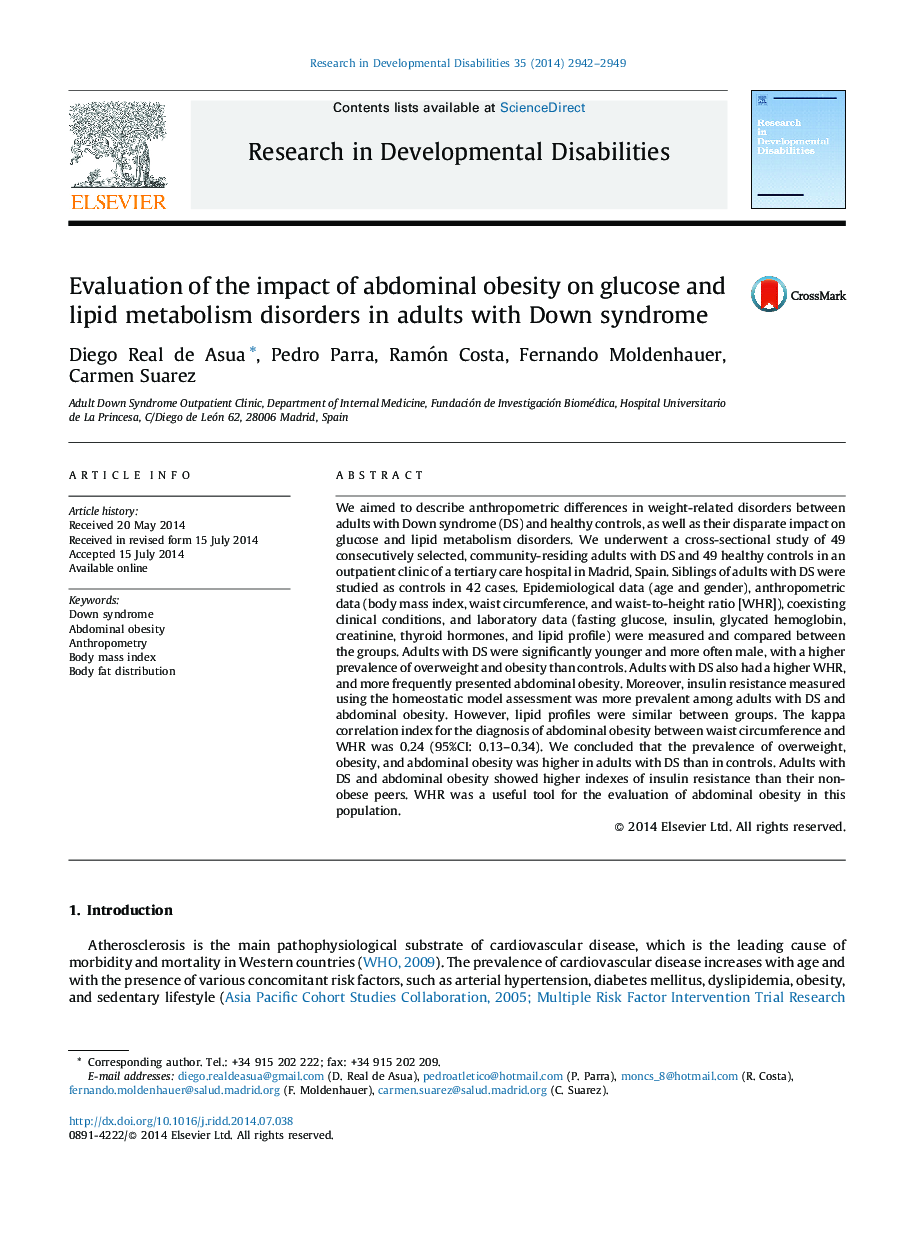| Article ID | Journal | Published Year | Pages | File Type |
|---|---|---|---|---|
| 10317321 | Research in Developmental Disabilities | 2014 | 8 Pages |
Abstract
We aimed to describe anthropometric differences in weight-related disorders between adults with Down syndrome (DS) and healthy controls, as well as their disparate impact on glucose and lipid metabolism disorders. We underwent a cross-sectional study of 49 consecutively selected, community-residing adults with DS and 49 healthy controls in an outpatient clinic of a tertiary care hospital in Madrid, Spain. Siblings of adults with DS were studied as controls in 42 cases. Epidemiological data (age and gender), anthropometric data (body mass index, waist circumference, and waist-to-height ratio [WHR]), coexisting clinical conditions, and laboratory data (fasting glucose, insulin, glycated hemoglobin, creatinine, thyroid hormones, and lipid profile) were measured and compared between the groups. Adults with DS were significantly younger and more often male, with a higher prevalence of overweight and obesity than controls. Adults with DS also had a higher WHR, and more frequently presented abdominal obesity. Moreover, insulin resistance measured using the homeostatic model assessment was more prevalent among adults with DS and abdominal obesity. However, lipid profiles were similar between groups. The kappa correlation index for the diagnosis of abdominal obesity between waist circumference and WHR was 0.24 (95%CI: 0.13-0.34). We concluded that the prevalence of overweight, obesity, and abdominal obesity was higher in adults with DS than in controls. Adults with DS and abdominal obesity showed higher indexes of insulin resistance than their non-obese peers. WHR was a useful tool for the evaluation of abdominal obesity in this population.
Related Topics
Life Sciences
Neuroscience
Behavioral Neuroscience
Authors
Diego Real de Asua, Pedro Parra, Ramón Costa, Fernando Moldenhauer, Carmen Suarez,
